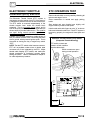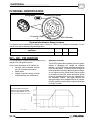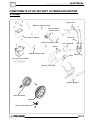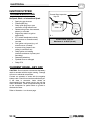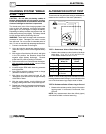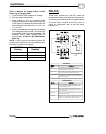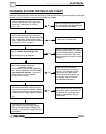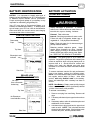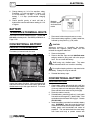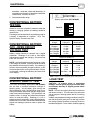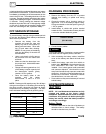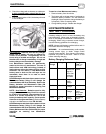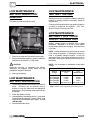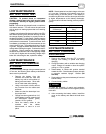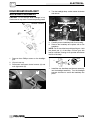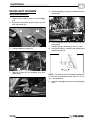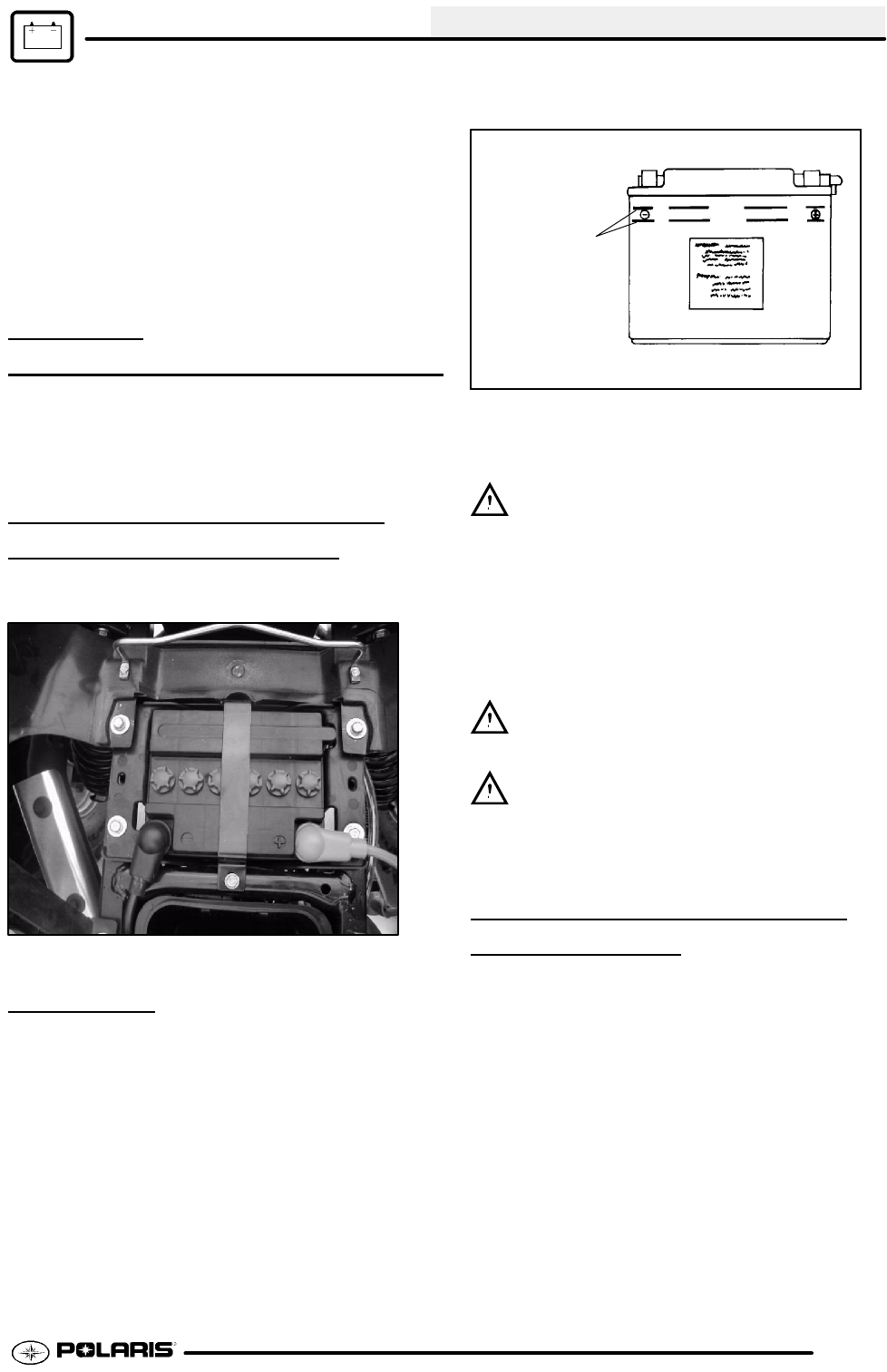
ELECTRICAL
10.23
5. Charge battery at 1/10 of its amp/hour rating.
Examples: 1/10 of 9 amp battery = .9 amp; 1/10
of 14 amp battery = 1.4 amp; 1/10 of 18 amp
battery = 1.8 amp (recommended charging
rates).
6. Check specific gravity of each cell with a
hydrometer to assure each has a reading of 1.270
or higher.
BATTERY
TERMINALS/TERMINAL BOL
TS
Use Polaris corrosion resistant Nyogelt grease (PN
2871329) on battery bolts. SeeBattery Installationon
Page 10.23.
CONVENTIONAL BATTERY
INSPECTION/REMOV
AL
The battery is located under the seat.
Inspect the battery fluid level. When the battery fluid
nears the lower level, remove the battery and fill with
distilled water only
to the upper level line. To remove
the battery:
Maintain
between upper
and lower level
marks
1. Disconnect holder strap and remove covers.
2. Disconnect battery negative (-) (black) cable first,
followed by the positive (+) (red) cable.
CAUTION
Whenever removing or reinstalling the battery,
disconnect the negative (black) cable first and
reinstall the negative cable last!
3. Remove the battery.
4. Remove the filler caps and add distilled water
only as needed to bring each cell to the proper
level. Do not overfill the battery.
Refill using only distilled water. Tap water
contains minerals which are harmful to a battery.
Do not allowcleaning solution or tap water inside
the battery. Battery life may be reduced.
5. Reinstall the battery caps.
CONVENTIONAL BATTERY
INSTALLA
TION
1. Clean battery cables and terminals with a stiff wire
brush. Corrosion can be removed using a solution
of one cup water and one tablespoon baking soda.
Rinse well with clean water and dry thoroughly.
2. Route the cables correctly.
3. Reinstall battery, attaching positive (+) (red) cable
first and then the negative (-) (black) cable. Coat
terminals and bolt threads with Nyogelt Grease
(PN 2871329).
4. Install clear battery vent tube from vehicle to battery
vent. WARNING: Vent tube must be free from
obstructions and kinks and securely installed. If not,
battery gases could accumulate and cause an
explosion. The vent tube should be routed away
from frame and body to prevent contact with



